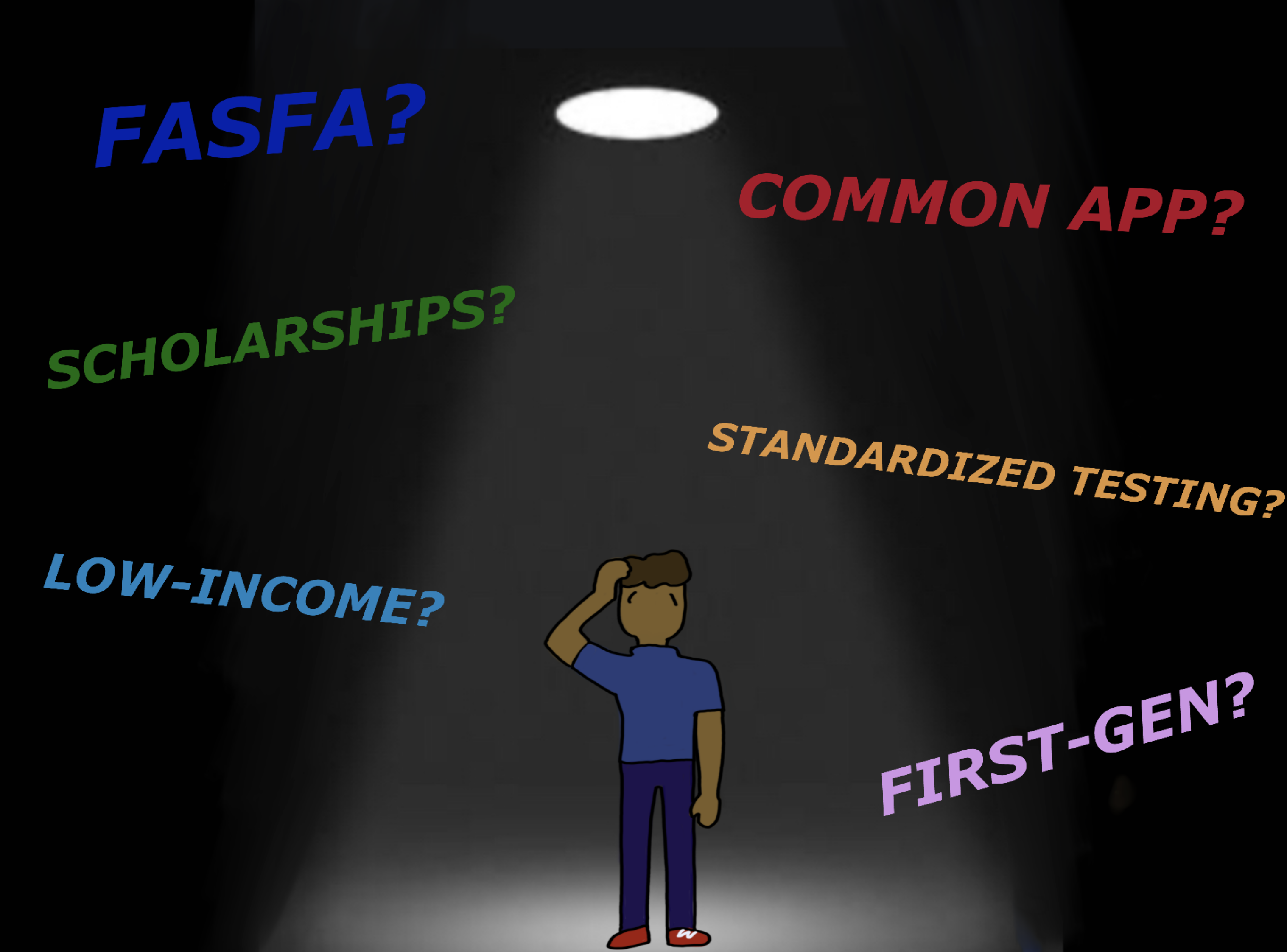With the recent national stories about the “Varsity Blues” college admissions scandal garnering so much attention, and the ridiculous criminal extent to which parents went to secure their children a spot at elite secondary institutions, it’s safe to say that college admissions are more cutthroat than ever. Students are vigorously competing to get into dream schools by earning impressive accolades, leadership positions, dazzling test scores, and sky-high GPAs.
The trepidation of applying to college is intensified for students from lower socioeconomic backgrounds. Without extra boosts like athletic recruitment or SAT prep, how are they figuring out the admissions process? Simply put, applying to college is not structured in a fair playing field.
Getting into college is tricky enough with admission offices requiring high SAT scores and a “rigorous course load” — like AP, IB, or dual enrollment courses. But not every high school student has access to these types of classes because of funding or teacher training. Some students can’t afford SAT or ACT prep, and even if you take an AP class, the exam itself, which is what colleges award credit for, costs $94 per exam. And dual enrollment is only a viable option at some schools and if you have transportation.
Colleges also want to see involvement in after-school activities, sports, and clubs, a lot of which also cost money. Sports dues can start at $100, and if you’re in multiple sports, the price tag only gets heftier. But it’s not just athletics — debate and academic team responsibilities have a dollar sign attached to them, too. Truth of the matter is that, oftentimes low-income families cannot afford extraneous fees and dues for their children to receive these application boosters.
On Savingforcollege.com, author and college financial aid expert Mark Kantrowitz says 61% of students who did not apply for financial aid thought they were ineligible, and 23% had no information on how to apply. What’s even more staggering is that in 2016, 2 million students who would have been eligible for aid did not apply at all.
Macy L., a sophomore at the University of Louisiana at Lafayette, describes a situation that happened with her brother when applying for college. “When it came time for him to fill out a FAFSA and apply to schools, the high school didn’t help him,” she said. “They had decided he wasn’t likely to go far and didn’t help him with any of it.”
Poor counseling enables discouragement, which can hinder a student’s future prospects. Macy said many of her brother’s classmates didn’t bother applying to college because they didn’t know how to go about it and didn’t have resources or guidance to encourage them.
All of these factors ultimately fortifies the barriers of the money divide between students on the road to college.
This phenomenon has not gone overlooked. Today, several groups (see resources) aim to achieve inclusivity in elite secondary education by introducing pathway programs for low-income and historically underrepresented students. They aim to bridge the gap via college prep courses, application help, and interview tips for prospective students.
George Popoola, a high school senior from Elite Scholars Academy in Jonesboro, is currently enrolled in the SCS Noonan Scholars Program, a Los Angeles-based nonprofit that “helps equip high-achieving students from underrepresented populations to graduate from top colleges,” according to the organization’s website. George said of the Summer Academy he attended: “Honestly, it changed my entire perspective on college admissions. Before going, I was afraid to apply to Ivy Leagues and schools out of state because I was afraid I couldn’t afford it. I hadn’t even known what the Common App was.” The selective program covers all housing, board, and transportation costs, and aside from providing advanced instruction also navigated the students through FAFSA applications as well as merit-based scholarships. Now a senior, George feels more confident in his application journey and better equipped to succeed wherever he ends up.
RESOURCES FOR HELP
Free SAT Prep Khan Academy offers eight “full-length, real practice tests” created with College Board.
Fee Waivers – See your school counselor for fee waivers for SAT/ACT and college application fees. Eligibility details are online at sat.org/fee-waivers and collegeboard.org/waiver-colleges.
College-prep programs serving the Atlanta area:
Leap Year – Gap year fellowship to get ready for college
Year Up – connects youth to jobs and internships
One Goal Graduation partners with local schools as part of Achieve Atlanta
Posse Foundation recruits and trains high school students to attend college together at partnering colleges.
Quest Bridge offers College Prep Scholars for juniors (application in February) and a college match program for seniors (August-September).




